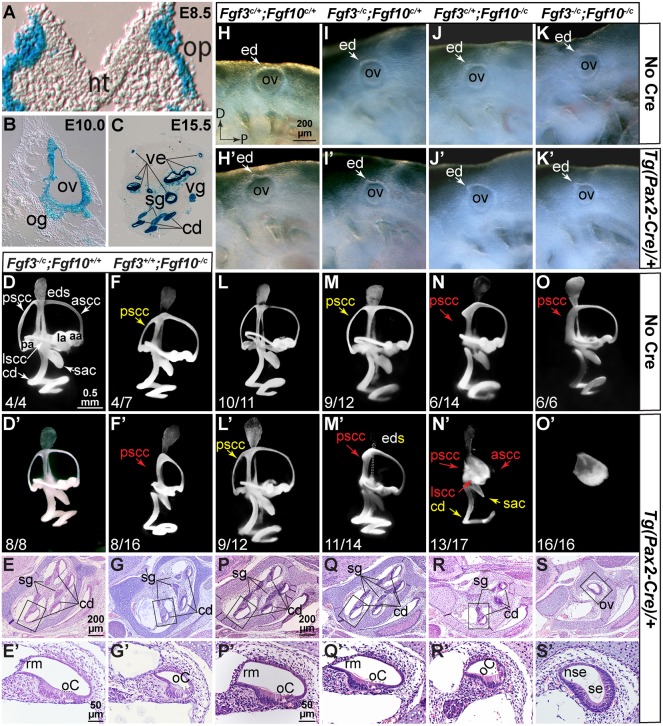Fig. 2.
Fgf3 and Fgf10 are not required in the Pax2-Cre lineage for otocyst formation, but both are required subsequently for vestibular and cochlear morphogenesis. (A-C) Pax2-Cre otic lineage (blue) at indicated stages. (H-K′) E9.5 left otocysts showing normal development. (D-F′,L-O′) E15.5 paintfilled ears, right lateral views of most common phenotype (enumerated in Table S1). (E-G′,P-S′) E18.5 Hematoxylin and Eosin-stained sagittal cochlear sections. Boxed regions are enlarged in E′,G′,P′-S′. Fgf genotypes are shown above each column and Cre status indicated to the right. Yellow text indicates apparent length reductions, red text indicates expected positions of missing structures. aa, anterior ampula; ascc, anterior semicircular canal; cd, cochlear duct; ed, endolymphatic duct; eds, endolymphatic duct/sac; la, lateral ampula; lscc, lateral semicircular canal; nt, neural tube; nse, non-sensory epithelium; oC, organ of Corti; og, otic ganglion; op, otic placode; ov, otic vesicle; pa, posterior ampula; pscc, posterior semicircular canal; rm, Reissner's membrane; sac, saccule; se, sensory-like epithelium; sg, spiral ganglion; ve, vestibular epithelium; vg, vestibular ganglion. Scale bar in H applies to H-K′; in D to D-F′,L′-O′; in E, to E,G; in E′ to E′,G′; in P to P-S; and in P′ to P′-S′.

